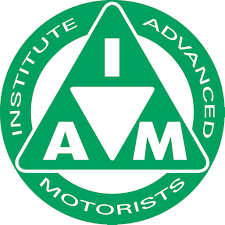Tips for Manual Driving Beginners: Easing the Learning Curve
Learning to drive a manual car can seem a bit daunting at first. The thought of controlling the clutch, switching gears, and ensuring the car doesn’t stall can be a bit overwhelming. But mastering a manual vehicle isn’t just about juggling pedals and gears; it’s about understanding the mechanics and enjoying the ride. Manual cars give you more control over your driving experience, and they can be quite fun once you get the hang of it. Plus, driving a manual vehicle can be handy knowledge, especially when you’re exploring the varied roads of Southampton.
Why is it so important to get comfortable with manual driving? Well, it offers a greater grasp on how your car reacts to different situations. Sliding into a manual vehicle lets you feel more connected to your car and the road. It’s not just about getting from A to B; it’s about the whole journey. Whether manoeuvring through the serene streets of Southampton or taking a leisurely drive along the coast, understanding and mastering these skills brings peace of mind and a sense of confidence.
Understanding the Basics of Manual Driving
Before you hit the road, it’s crucial to understand how manual transmission works. A manual gearbox involves several key components that work together to propel the car. Here’s a simple breakdown:
– Clutch: The pedal on the left. It disconnects the engine from the wheels when changing gears.
– Gear Stick: Used to select different gear positions.
– Gearbox: Houses all the gears and allows power to be transferred from the engine to the wheels.
Comprehending these basics is the first step toward driving success. The clutch lets you engage or disengage power from the engine to the transmission, which is vital when changing gears. Each gear has a speed range, and shifting gears helps the car move while both saving fuel and providing a smooth driving experience.
When you understand how to use the clutch and gear stick, you’ll find driving a manual car more straightforward. The intuitive movement of the gear stick becomes second nature over time with practice. Start by sitting in your parked car and practising moving the gear lever through the gears. You’ll want this action to become second nature.
Tips for Starting Smoothly
One of the biggest challenges for beginners is getting the car moving without stalling. The trick lies in understanding the “biting point.” This is when the clutch engages with the engine’s power, and your car starts to roll forward.
Here’s how to start smoothly:
- Press the clutch fully and start the engine.
- Move the gear stick to first gear with the clutch still pressed down.
- Gradually lift the clutch until you reach the biting point, and you can feel the car wanting to move.
- Gently apply the accelerator while slowly releasing the clutch.
Practicing this routine repeatedly will help you get a feel for both the biting point and how much pressure to apply on the accelerator. Finding this sweet spot is crucial; it’s what prevents those embarrassing stalls at a traffic light.
As you get more comfortable, try starting on flat roads before moving on to small inclines in Southampton. It’s all about practice and patience. Before you know it, smooth starts will become second nature, setting a strong foundation for tackling more complex driving scenarios.
Gearing Up: Shifting and Downshifting
Once you’ve got the hang of starting smoothly, it’s time to master the art of shifting and downshifting gears. Shifting gears isn’t just about moving the gear stick; it’s about timing and coordination. Changing gears at the right time ensures that your car runs efficiently and smoothly.
Here are tips for shifting gears effectively:
– Timing: Listen to your engine. If it revs too high or too low, it’s time to shift.
– Clutch Control: Press the clutch fully before shifting, then release it smoothly.
– Gear Selection: Know which gear suits different speeds and scenarios.
Downshifting is just as important. It provides greater engine control, especially when slowing down. Press the clutch, select a lower gear, and smoothly release the clutch for a steady transition. Avoid sudden gear changes, as this can upset the balance of the car.
Common mistakes include grinding gears by not fully pressing the clutch, shifting at inconsistent speeds, or skipping gears unnecessarily. With practice in an open space, you’ll see how your vehicle responds, making each shift seamless.
Navigating Hills and Inclines
Driving manuals is a unique challenge on hills, but with some practice, you can handle slopes like a pro. Beginning a hill start without rolling back requires a blend of clutch control and accelerator usage.
Consider these techniques:
– Handbrake Method: Hold the car steady using the handbrake. As you find the biting point, release the handbrake and add power simultaneously.
– Feathering the Clutch: By feeling the biting point as you accelerate, you can start on an incline without backsliding.
When approaching inclines, maintain enough revs so your car doesn’t stall. This practice will allow you to glide over hills without drama. Using the handbrake provides stability when waiting at traffic lights on a slope, giving you time to adjust and start smoothly.
Parking and Manoeuvring with Precision
Parking a manual car involves precision. Whether you’re parallel parking on Southampton’s busy streets or weaving into a tight spot, understanding your vehicle’s dimensions and movements is key.
Steps for precise parking:
1. Choose Your Spot: Make sure it’s ample enough for your car.
2. Slow and Steady: Punchy movements lead to mistakes; take smooth and deliberate actions.
3. Mirror Checks: Constantly look for objects and align your car correctly.
4. Practice Three-Point Turns: Familiarize yourself with this useful manoeuvre for confined spaces.
For manoeuvres like reversing and three-point turns, slow speeds and gentle clutch control are essential. Practising in open areas builds confidence, so when you’re navigating the lively roads of Southampton, you’re set to perform with precision and ease.
Embracing Manual Driving in Southampton
Committing to driving lessons, particularly in a manual vehicle, provides the skills needed to explore Southampton’s captivating routes. From its city streets to coastal roads, navigating a manual car enhances your driving experience and ensures you’re ready for varying landscapes.
Taking advantage of local practice areas builds comfort and proficiency. Schools offer structured lessons that adapt to your pace, making the learning process supportive and thorough. By practising consistently, you will elevate your comfort and ease in driving across different environments.
Understanding manual driving allows you to fully grasp the connection between you and your vehicle. With each new skill, your confidence grows, making every drive an opportunity to hone your abilities. A manual driving lesson sets you on a path where each journey feels as adventurous as the last.
Ready to Get Behind the Wheel?
Manual driving may be different from what you’re used to, but it holds a world of benefits. It’s about gaining control, building confidence, and enjoying the car’s response as you navigate every street or journey. You’ve learned about working the gears, managing starts, and perfecting those tricky turns and parking.
Regular practice and patience will make all these tips come naturally. Embracing the learning curve marks the start of many rewarding drives. Gear up and find the freedom of driving a manual in and around Southampton, setting yourself up for countless smooth and enjoyable roads ahead.
Ready to enhance your skills and gain confidence on the road? Discover how a manual driving lesson in Southampton with Lendrum’s Driving School can pave the way for an enjoyable and empowered driving experience. Embark on this educational journey to master gear shifting and tackle various terrains with ease.










